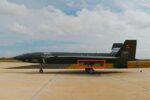The United Kingdom has taken its first concrete steps toward acquiring a new undersea surveillance system as part of NATO’s Atlantic Net initiative. Designed to bolster anti-submarine warfare (ASW) and maritime intelligence capabilities across the North Atlantic, this move signals a renewed focus on persistent underwater domain awareness amid growing Russian submarine activity.
Atlantic Net: A Multinational Response to Undersea Threats
Atlantic Net is a NATO-aligned initiative aimed at building an integrated network of undersea sensors and data-sharing nodes across the North Atlantic. The concept envisions a distributed architecture of fixed seabed sensors, mobile platforms (including unmanned underwater vehicles), and shore-based command centers that can detect and track adversary submarines in real time.
This effort is driven by mounting concerns over increasing Russian submarine patrols in the Greenland-Iceland-UK (GIUK) gap and broader North Atlantic approaches. According to NATO’s Maritime Command (MARCOM), Russia has significantly increased its deployment of advanced submarines like the Yasen-class (Project 885M) in recent years. These vessels pose a credible threat to NATO sea lines of communication (SLOCs), undersea cables, and strategic deterrence assets.
The UK’s participation in Atlantic Net reflects its strategic interest in defending its maritime periphery and supporting collective deterrence. The Royal Navy already operates advanced ASW platforms such as Type 23 frigates with Sonar 2087 towed arrays and P-8A Poseidon maritime patrol aircraft. However, these assets are limited by sortie rates and coverage gaps—shortcomings that fixed or persistent sensor networks could mitigate.
MOD Market Engagement Kicks Off Acquisition Process
On October 16th, the UK Ministry of Defence (MOD) issued an early market engagement notice through its Defence Sourcing Portal seeking industry input on potential solutions for an “underwater persistent surveillance” capability. This marks the initial phase of procurement planning for what will become the UK’s contribution to Atlantic Net.
The MOD is soliciting information on both commercial off-the-shelf (COTS) technologies and bespoke solutions that can deliver continuous detection of undersea threats in contested environments. Key capability areas highlighted include:
- Seabed-deployed passive acoustic sensors
- Unmanned underwater vehicles (UUVs) with onboard sonar
- Low-power communications systems for subsea data relay
- Edge processing or AI-enabled signal classification
- Integration with existing Royal Navy C4ISR systems
The MOD anticipates releasing a formal request for proposals (RFP) in late FY2025 or early FY2026 following this engagement phase. The program is expected to be managed by DE&S Submarine Delivery Agency (SDA) with support from DSTL on technical evaluation.
Industry Landscape: Thales, Ultra Maritime Among Potential Bidders
The UK defense industry includes several firms well-positioned to contribute technologies relevant to this program. Thales UK has extensive experience with seabed sensor arrays through its work on SOSUS-style systems and deployable sonar networks. Its CAPTAS family of variable depth sonars also provides proven acoustic processing capabilities.
Ultra Maritime specializes in underwater acoustic surveillance systems including sonobuoys, passive arrays, and signal processing software used by multiple NATO navies. Its ORION XLUUV platform could serve as a mobile node within the envisioned network architecture.
Other potential contributors include:
- L3Harris – UUVs and subsea comms systems
- Kongsberg – HUGIN UUV series with synthetic aperture sonar
- BMT – Systems integration expertise for naval ISR projects
- Spectra Group – Tactical communications bridging surface/subsurface domains
A key challenge will be ensuring interoperability among diverse sensor types while maintaining low probability of intercept/detection (LPI/LPD) characteristics essential for survivability in high-threat environments.
NATO Interoperability Requirements Will Shape System Design
The UK’s system must be interoperable with other NATO members’ contributions to Atlantic Net—including those from Norway, Canada, France, and potentially the US Navy’s Integrated Undersea Surveillance System (IUSS). This necessitates adherence to common data formats such as STANAG protocols for acoustic metadata exchange.
Moreover, real-time data fusion across national boundaries will require secure cross-domain solutions capable of operating within multiple classification levels while minimizing latency. The use of AI/ML tools at edge nodes may help reduce bandwidth consumption by filtering false positives before transmission.
This focus on allied integration reflects broader trends within NATO toward federated ISR architectures where each member contributes modular capabilities rather than duplicative standalone systems.
Tactical Implications: Persistent Coverage vs Platform-Based ASW
If successfully fielded by the late-2020s or early-2030s timeframe targeted by MOD planners, this capability would significantly augment current platform-based ASW operations. Unlike P-8A sorties or frigate patrols limited by endurance or availability cycles, seabed sensors offer continuous monitoring—especially valuable during crisis periods when adversaries may attempt covert deployments under cover of peacetime norms.
This persistent surveillance could also feed into rapid cueing mechanisms for manned response assets or long-range weapons like torpedo-tipped UAVs or smart mines. In theory it would enable faster kill chains against transiting submarines before they reach critical choke points like the GIUK gap or English Channel approaches.
Outlook: Strategic Investment Amid Renewed Undersea Competition
The UK’s move toward acquiring an underwater persistent surveillance system underscores growing recognition that control of the undersea domain is once again central to great power competition—particularly given Russia’s investment in quiet SSNs/SSBNs and seabed warfare capabilities such as GUGI-operated special mission subs like Losharik or Belgorod.
If funded at scale—and integrated effectively into broader NATO efforts—the British contribution could play a pivotal role in restoring alliance-level situational awareness across one of its most strategically vital theaters: the North Atlantic SLOC corridor between North America and Europe.










